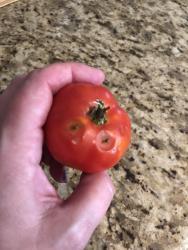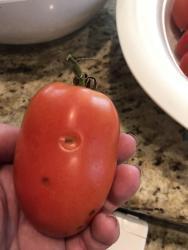I agree probably not soil born but to answer your question:
In the Northeast alone 1,687,080 tons of fresh market and processing vegetables on 264,490 acres, worth $701,377,000 suffer 10-15% losses from soil borne diseases (NASS Crop Profiles, 2007). Disease suppressive cover crop rotations may provide an additional tool for managing soil borne disease. Researchers have documented significant increases in yield after sudangrass, brassica, millet and other cover crops. Here we describe recent results of a two season on-farm case study using cover crops to suppress Verticillium wilt in tomato.
Mustards, rapeseed and sudangrass contain a chemical and an enzyme in the plant cell wall. When these cover crops are chopped into small pieces with a flail mower and then quickly incorporated and sealed into the soil using a cultipacker or water, the chemical comes into contact with the enzyme and it breaks down into a chemical that behaves like a fumigant. The chemicals and the enzymes are not toxic by themselves, but when they come in contact with each other, the chemical is broken down by the enzyme into compounds that are toxic to soil-borne pathogens and even weeds seeds. Cover crops can also improve soil organic matter and related soil water holding capacity, infiltration and microbial activity which positively impact yields over time.
From Penn. State.

